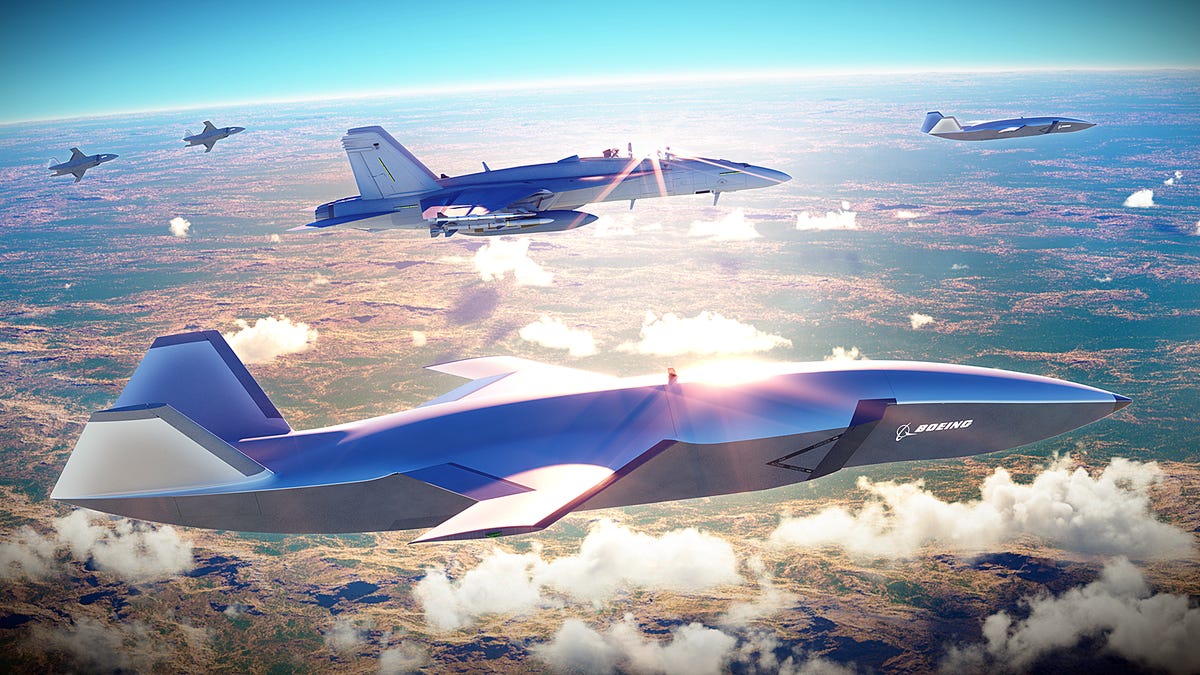Boeing's 'loyal wingman' drone can fly alongside piloted aircraft
The unpiloted Airpower Teaming System can fly more than 2,000 nautical miles at a stretch as part of military operations.

Boeing's Airpower Teaming System drone (shown in front) is designed to fly alongside piloted aircraft.
Boeing doesn't need a pilot to be your wingman.
The aviation company has unveiled a new unpiloted drone that uses AI to fly alongside piloted aircraft, operating as what it calls a "loyal wingman" for military operations.
While the ATS has only been shown as a model, Boeing wants to start flights in 2020.
Designed by Boeing Australia with investment from Australia's Department of Defence, the Boeing Airpower Teaming System ( ATS ) is the first unpiloted aircraft developed by Boeing outside the United States. Measuring 38 feet long (11.7 metres), it can fly without a pilot for more than 2,000 nautical miles -- either solo, or alongside other military aircraft.
Boeing is investing heavily in the future of unpiloted aviation and autonomous systems, engineering unmanned vehicles for everything from ocean exploration to space travel, as well as futuristic air taxis that could form the basis of travel in the cities of tomorrow.
While Boeing has only unveiled a model of its new Airpower Teaming System, the company says the final ATS will feature onboard sensors to "support intelligence, surveillance and reconnaissance missions and electronic warfare" as well as artificial intelligence capabilities to help it keep a safe distance from other aircraft.
The ATS is expected to take its first flight in 2020.

